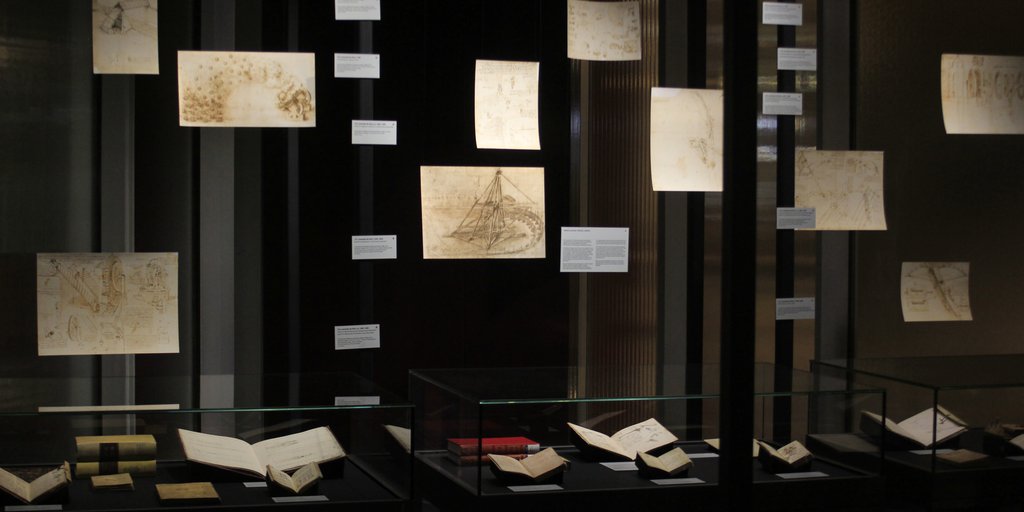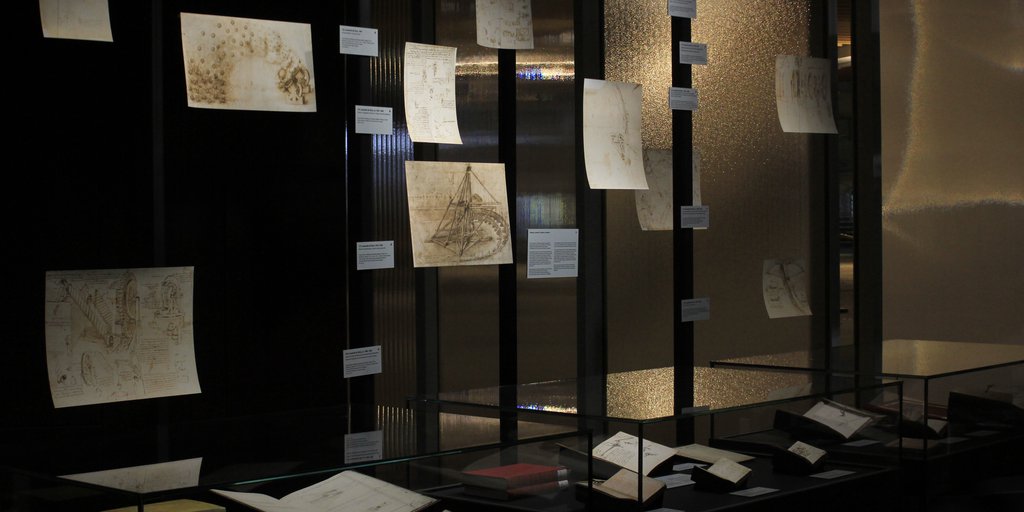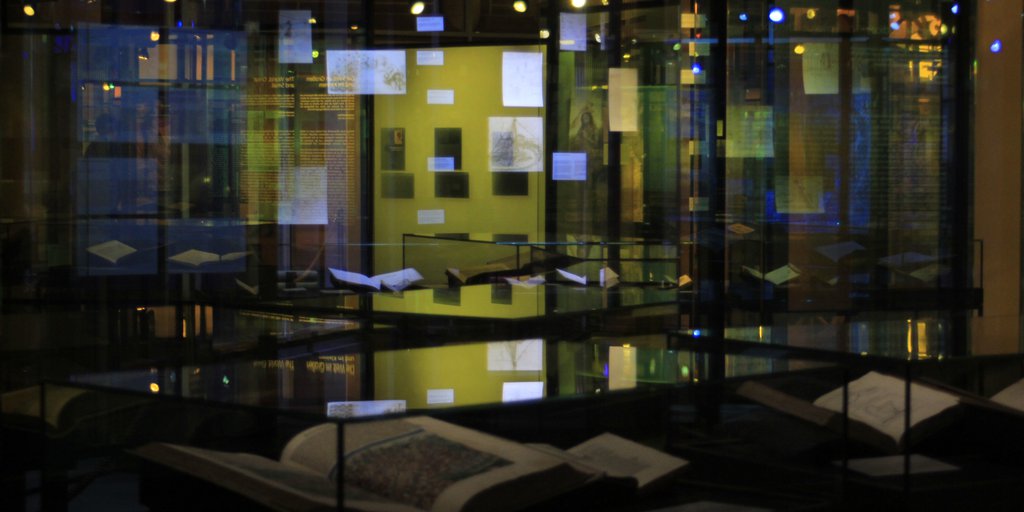
Epilogue: The Codices <
This is a collection without order, compiled from many papers that I have copied here,
hoping to put them in their respective order, according to the subjects they address …
Leonardo da Vinci
Codex Arundel, fol. 1r. Translation: Elizabeth Hughes
Leonardo’s surviving literary estate comprises over 4,000 sheets; a total of 22 volumes of illustrated manuscripts, generally known as codices, still exists today. The material is extremely heterogenous. Alongside pocket-sized sketchbooks with jottings made on the spot purely for his own use, there are large-format clean copies that seem to address an audience. What the volumes have in common is their thematic diversity, and all show traces of continual use and revision. At his death, Leonardo left the volumes to his collaborator and heir Francesco Melzi (1491/92–1567). Melzi’s heirs sold a large part of this legacy to the sculptor Pompeo Leoni (ca. 1533–1608). In 1637 the collector Galeazzo Arconati (before 1592–1649) donated several of these manuscripts to the Biblioteca Ambrosiana in Milan. They ultimately reached Paris as part of Napoleon’s spoils of war where most of them are still kept today—fortunately mostly in their original binding. Other codices took entirely different paths—though under similarly dramatic circumstances.
Codices <
 | 107.
Transformation 1505 |

A connected series of sheets testifies to Leonardo’s intensive study of the problems of spatial geometry (stereometry) based on Euclid’s Elements (12 ■). It is signed self-confidently with the words, “started on July 12, 1505 by me, Leonardo da Vinci” (fol. 3r), and he probably intended to expand it into a treatise in its own right. Here it deals almost exclusively with exercises that the artist works through on the transformation of the shape of geometric bodies of constant volume. He explains step by step his procedure for the transformation of a dodecahedron into a cube of the same volume. To heighten its didactic value, he illustrates the most important interim stages of the construction with a neatly numbered sequence of pen drawings.
References
Bambach, Carmen C. 2019. Leonardo da Vinci Rediscovered. Vol. 2: The Maturing of a Genius 1485–1506. 4 vols. New Haven / London: Yale University Press, 460–464.











